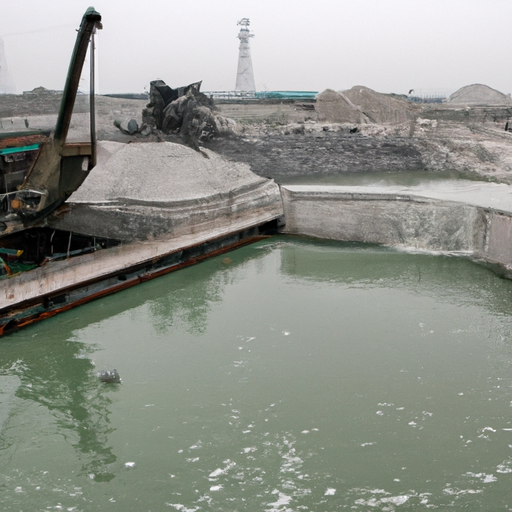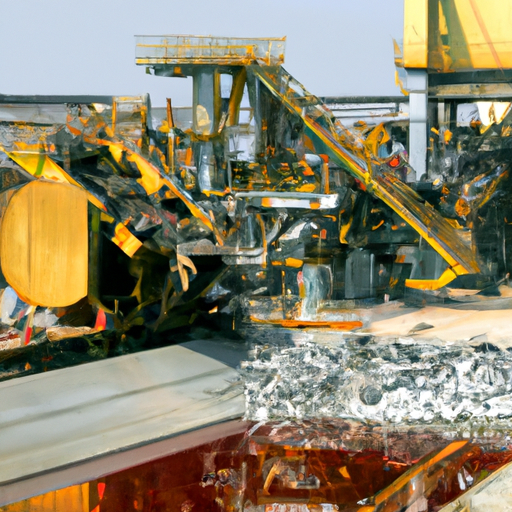Exploring the Efficiency and Advancements of Horizontal Mud Agitators in China

Introduction (100 words):
Horizontal mud agitators play a crucial role in various industries, particularly in the oil and gas sector, mining, and wastewater treatment. China, being a global manufacturing hub, has emerged as a significant player in providing high-quality agitator solutions. This article delves into the efficiency, advancements, and market trends of horizontal mud agitators in China, highlighting their importance in promoting efficient operations, cost-effectiveness, and environmental sustainability.

1. Understanding Horizontal Mud Agitators (200 words):
Horizontal mud agitators are industrial devices designed to ensure efficient mixing and agitation of drilling fluids, mud, and other viscous materials in storage tanks, mud pits, and other vessels. They are primarily employed in drilling rigs to prevent solid particles from settling and maintain the desired consistency of drilling fluids.
In China, manufacturers have been investing in research and development to enhance the performance and reliability of horizontal mud agitators. These agitators are typically powered by electric or hydraulic motors, driving impellers that create fluid motion and prevent sedimentation. The agitators are mounted horizontally on tanks or pits, ensuring optimal mixing and uniformity throughout the fluid.
2. Advancements in Horizontal Mud Agitators in China (300 words):
China has witnessed significant advancements in the design, engineering, and manufacturing of horizontal mud agitators. Manufacturers are incorporating advanced technologies, such as computational fluid dynamics (CFD) simulations, to optimize agitator performance and improve energy efficiency. These simulations enable engineers to analyze fluid flow patterns, turbulence, and mixing effectiveness, leading to the development of more efficient impeller designs.
Another notable advancement is the integration of variable frequency drives (VFD) in horizontal mud agitators. VFD technology allows precise control of motor speed, enabling operators to adjust agitation intensity as per specific requirements. This feature not only enhances operational flexibility but also saves energy by avoiding unnecessary motor overloads.
Furthermore, Chinese manufacturers are focusing on the materials used in agitator construction. Corrosion-resistant alloys and durable coatings are being employed to increase the lifespan of agitators, reducing maintenance needs and overall costs.
3. Benefits and Applications (200 words):
Horizontal mud agitators offer numerous advantages, making them indispensable in various industries. Some key benefits include:
a. Efficient Mixing: Agitators ensure consistent and uniform mixing of drilling fluids, preventing solids from settling and maintaining desired viscosity. This results in improved operational efficiency and reduced downtime.
b. Cost-effectiveness: Proper mixing with horizontal mud agitators minimizes wastage of drilling fluids, ultimately reducing operational costs. Additionally, advancements in energy-efficient designs and VFD integration contribute to significant energy savings.
c. Environmental Sustainability: By preventing sedimentation and ensuring proper mixing, these agitators aid in reducing environmental impact. Properly mixed drilling fluids promote efficient separation of solids, facilitating recycling and minimizing waste disposal.
Horizontal mud agitators find applications in various industries, including oil and gas drilling, mining, wastewater treatment, and industrial mixing processes. They are crucial in maintaining drilling fluid properties, facilitating efficient drilling operations, and ensuring environmental compliance.
4. Market Trends and Future Outlook (200 words):
The market for horizontal mud agitators in China has been witnessing steady growth, driven by the country's thriving industrial sector and increasing demand for energy resources. Chinese manufacturers have been expanding their production capacities to cater to both domestic and international markets.
Moreover, the focus on environmental sustainability and stringent regulations pertaining to waste disposal have further propelled the demand for efficient and eco-friendly mud agitators. China's commitment to reducing its carbon footprint has encouraged manufacturers to develop energy-efficient agitators and explore alternative power sources, such as solar energy.
Looking ahead, the market for horizontal mud agitators in China is expected to experience notable growth, driven by ongoing industrialization and modernization efforts. Continued investments in research and development, coupled with advancements in automation and digitalization, will further enhance agitator performance and efficiency.
Conclusion (100 words):
Horizontal mud agitators in China have evolved significantly, incorporating advanced technologies and materials to ensure efficient mixing, reduce operational costs, and promote environmental sustainability. The country's manufacturers are at the forefront of innovation, focusing on energy efficiency, durability, and precision control. As the demand for energy resources and environmental compliance continues to rise, the market for horizontal mud agitators in China is poised for sustained growth.




 8613371530291
8613371530291